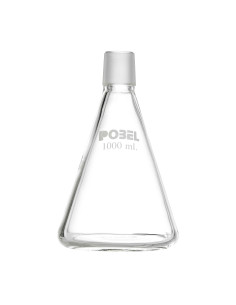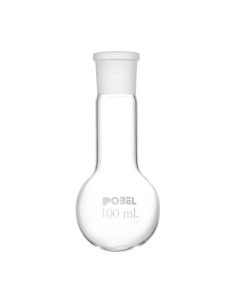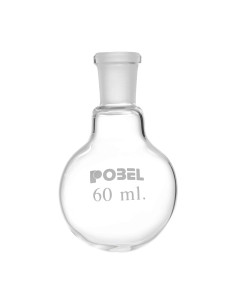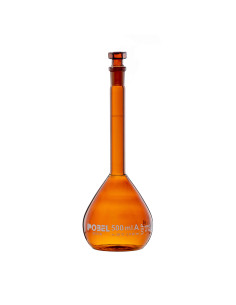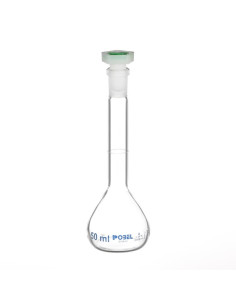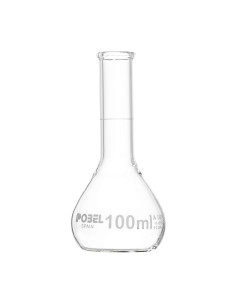What is a laboratory flask?
A laboratory flask is a vessel commonly made of glass, used for handling liquids, solids and gases in a laboratory environment. Flasks are designed with different shapes and capacities to suit specific tasks such as measuring precise volumes, performing chemical reactions or containing samples at controlled temperatures.
Their basic design consists of a wider body and a narrower neck, which allows more precise control when pouring liquids and prevents accidental spillage. The glass used is usually borosilicate glass, which withstands high temperatures and chemical reactions without deforming or breaking, making these vessels durable and safe for prolonged use.
What types of flasks are there?
There are several types of flasks used in laboratories, and each has a specific purpose. Here are the most common ones and their characteristics.
Erlenmeyer flask
The Erlenmeyer flask is one of the most commonly used flasks in laboratories. It has a wide base and a narrow neck that allows liquids to be shaken without spilling. It is ideal for mixing solutions and performing chemical reactions that require moderate heating. It is also used in titrations, as its design facilitates control of the contents.
Round bottom flask
The round bottom flask is characterised by its spherical shape and elongated neck. It is mainly used in organic synthesis and distillation. Its shape allows the heat to be evenly distributed, which is ideal for continuous heating processes. It is usually held with tongs or on a stand during use.
Flat bottom flask
The flat-bottomed flask is similar to the round-bottomed flask, but with a flat base that allows it to stand stable on a surface without the need for supports. It is useful for containing liquids, performing chemical reactions and for storing samples that require standing. However, it is not as efficient for uniform heat distribution as the round-bottom flask.
Volumetric flask
The volumetric flask is a calibrated vessel used primarily for the preparation of solutions with an exact volume. It has a mark on the neck indicating the exact volume it can hold. It is essential in quantitative analysis, as it ensures accuracy in liquid measurements.
Kitasate flask
The Kitasato flask is similar to the Erlenmeyer flask, but with a side outlet for connection to a vacuum system. It is used in vacuum filtration, where suction is required to accelerate the separation process of solids and liquids. Its design allows it to withstand pressure without breaking.
Discover Pobel's laboratory flasks
At Pobel, we specialise in offering laboratory flasks of the highest quality. Our products are made of borosilicate glass, which guarantees durability and resistance to high temperatures and chemical reactions. If you are looking for precision and safety in your experiments, our flasks are the best choice for your laboratory.
Frequently asked questions
What does it mean to make up the flask?
To make a flask up to volume means to fill a volumetric flask up to the calibration mark on its neck. This mark indicates an exact volume, so making up to the mark ensures that the amount of liquid inside the flask is accurate. It is a fundamental process in the preparation of chemical solutions to obtain accurate results.
What is the difference between gauging and making up to the mark?
Gauging is the exact volume that a flask can hold, measured to a specific calibration mark. Filling, on the other hand, is the action of filling the flask to that calibration mark. Both terms are related, but one refers to the volume and the other to the action of measuring it.




